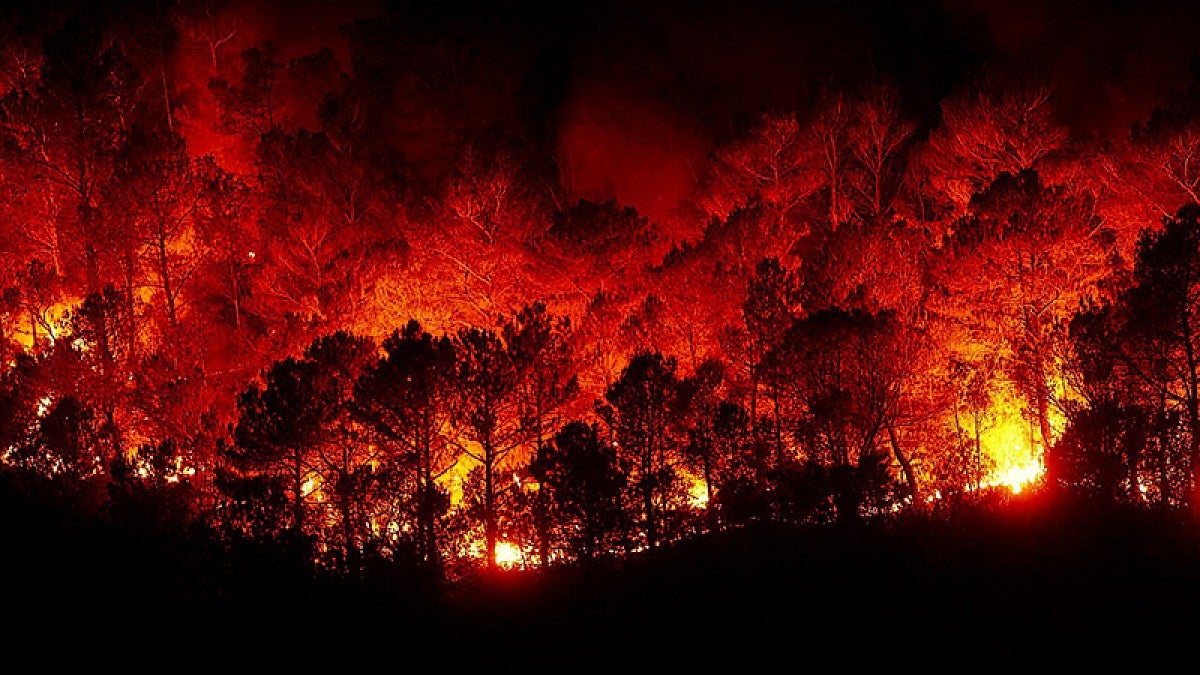Did massive wildfires spread across the Earth 13,000 years ago, leaving an ecologically changed Northern Hemisphere in their wake?
That’s a controversial question that UO archaeologist Jon Erlandson and an international team of scientists address in a study published online ahead of print this month in the Journal of Geology.
The study investigates marine, lake and terrestrial sediments on four continents to test the hypothesis that a major regional cooling period, known as the Younger Dryas, was triggered by a comet impact and a subsequent episode of intense, widespread burning of forests and other vegetation.
Evidence for a comet impact event was first reported in October 2007 by a 26-member team from 16 institutions in a paper in the Proceedings of the National Academy of Sciences. Erlandson and former UO scientist Douglas Kennett, now head of the Department of Anthropology at Penn State University, were co-authors on that paper.
The new study in the Journal of Geology describes a widespread “black mat” of organic sediment that was laid on sites across North America. The authors propose that the mat is the result of large-scale burning set off by the comet strike, which caused an “impact winter” and contributed to the extinctions of North America’s large ice age mammals, including mammoths, mastodons, dire wolves, horses and giant sloths.
They note that fossils of these large mammals, as well as evidence of one of their big game-hunting contemporaries, the Clovis people, have only been found in soil and rock layers below the black mat, suggesting that they were wiped out as the mat was deposited.
“If an impact winter contributed to mass megafaunal extinctions, it would also have significantly affected humans, directly and immediately, and then indirectly for centuries to come as a result of ecological changes,” said Erlandson, executive director of the UO Museum of Natural and Cultural History.
Indeed, the authors argue that following the termination of the Clovis culture, there was a decline in human populations across the Northern Hemisphere during the Younger Dryas.
Erlandson, an expert in island and coastal archaeology and research on the first Americans, has for more than three decades conducted fieldwork on California’s Channel Island, including two sites that contributed data to the new study.
A leading coastal-migration theorist, Erlandson has argued that Clovis culture — once thought to have migrated from mainland Asia across the Bering land bridge — was predated by maritime peoples arriving by way of a kelp highway along the Pacific Rim.
If the Clovis people were wiped out directly or indirectly by a cosmic impact, what might have happened to those earlier seafaring peoples who either settled along coastlines or possibly followed major Pacific Coast rivers into the North American interior?
Erlandson said the answers aren’t yet clear.
“Population data are sparse for this time period,” he said. “On the Channel Islands, there is an archaeological gap of several centuries after the proposed impact date, but we don’t yet know how meaningful that gap is. We’ve narrowed the gap considerably with recent field research, and future discoveries may narrow it further or eliminate it entirely.”
The study was described in more depth in a news release issued by the University of California, Santa Barbara.
—By Kristin Strommer, Museum of Natural and Cultural History


